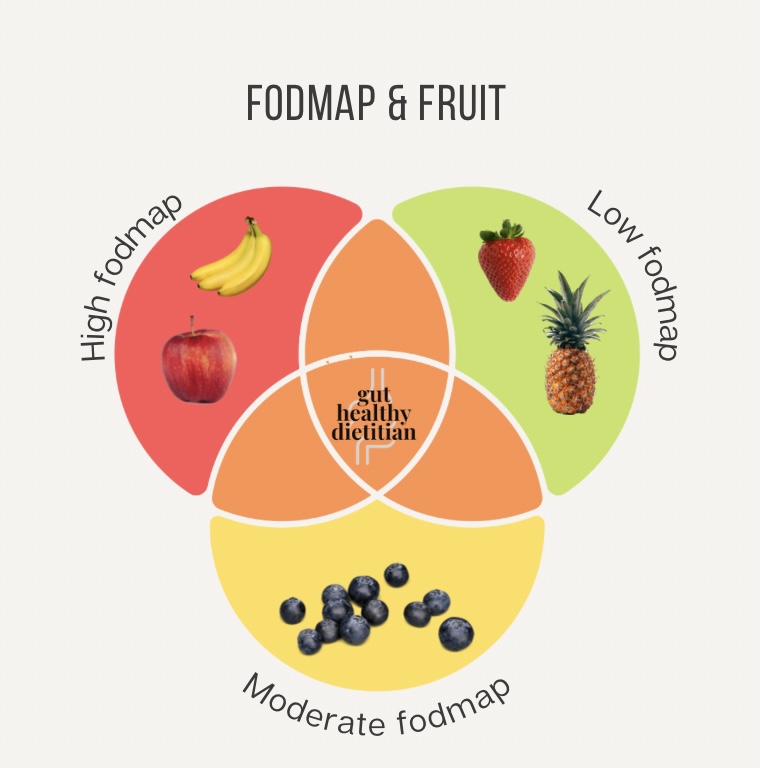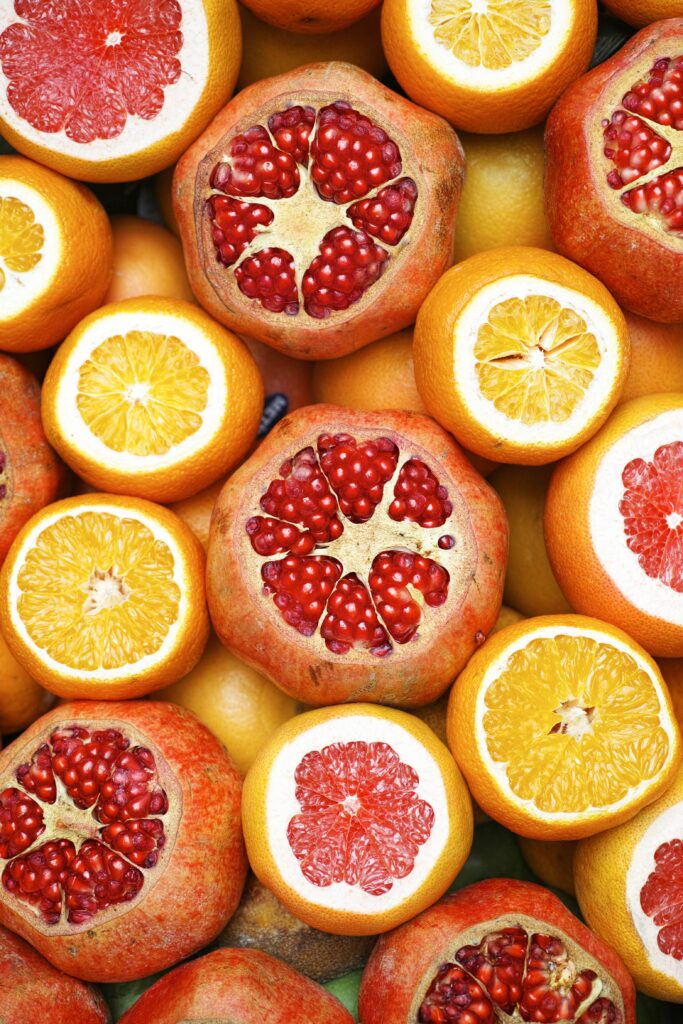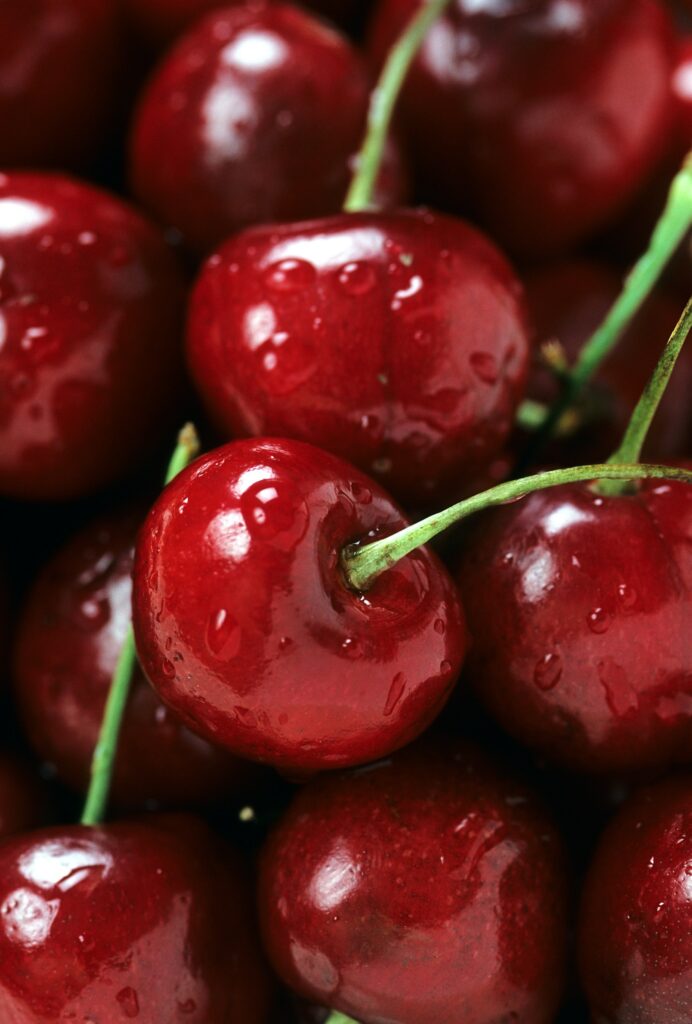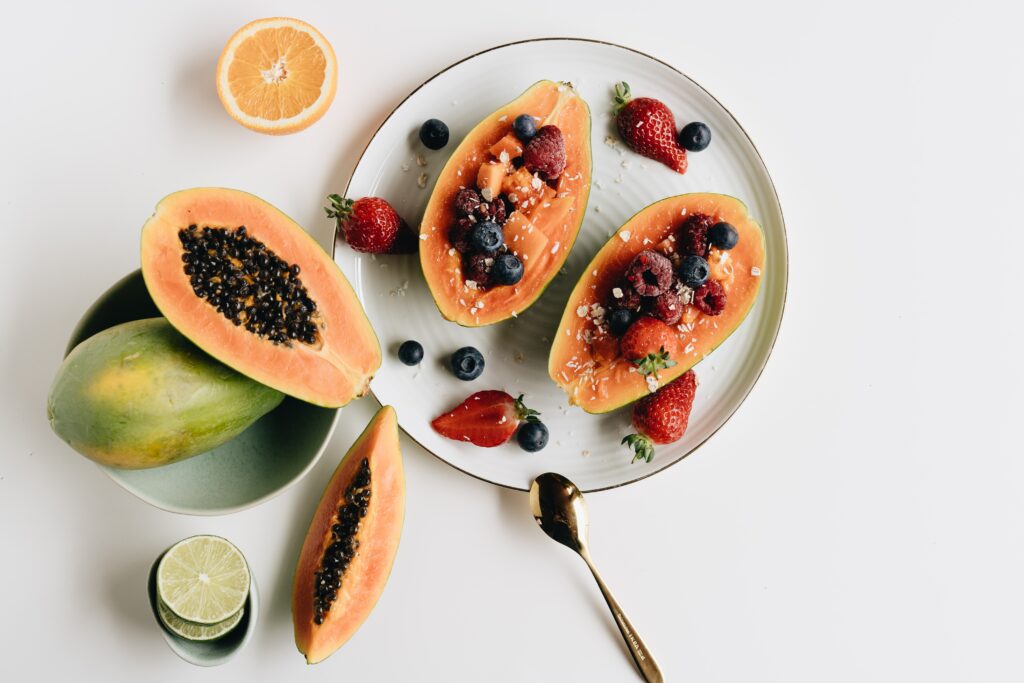
Low FODMAP Fruit
Without a doubt, one of the biggest challenges that I hear from clients about the low FODMAP diet are the restrictions around fruit. Fruits contain a variety of different FODMAPs, particularly excess fructose and sorbitol. In fact, all fruits contain the FODMAP fructose, although not in quantities high enough to be considered high FODMAP. Staple foods that are common in many people’s diets like smoothies can be particularly problematic, as they often contain not only large quantities but several different varieties of fruit. Continue reading to learn which fruits are low FODMAP-approved, and which fruits to limit if you have IBS symptoms!
What is the low FODMAP diet?
If you have digestive symptoms, or have been diagnosed with IBS, the chances are good that someone has recommended a low FODMAP diet to you. This is because FODMAP is an acronym that refers to specific types of fermentable carbohydrates or ‘FODMAPs’ that either pull water into the bowels (causing diarrhea), or cause bloating and distension leading to uncomfortable digestive symptoms. The low FODMAP diet is most commonly recommended for the management of IBS symptoms.
Although highly effective as a way to identify trigger foods for digestive symptoms and allow the gut time to rest and heal, unfortunately the low FODMAP diet is not the easiest diet to follow. Not only are many foods restricted on a low FODMAP diet, from eliminating lactose and gluten and certain fruits and vegetables, you also need to consider the quantity and portion sizes of many different foods. This is because many people with digestive symptoms have a limited threshold for tolerating FODMAPs, meaning they can only consume small portions of FODMAP-containing foods without risking symptoms. Even worse is that many of the foods that are restricted on a low FODMAP diet are healthy, nutrient (and fiber) dense foods that actually support gut health…if you can tolerate them.

Some examples of low FODMAP fruit are:
- Strawberries
- Pineapple
- Cantaloupe
- Honeydew melon
- Grapes
- Kiwi
- Oranges
- Papaya
- Passionfruit
- Guava
- Dragon fruit
- Starfruit
Every fruit has a different profile of FODMAPs. A few fruits have low enough levels of these troublesome carbohydrates that limited quantities can be tolerated. For example, a heaping ¼ cup of blueberries or 1/3 cup of raspberries are considered low FODMAP, whereas larger portions may be problematic.

Fruits that are considered high FODMAP are:
Not to say these fruits are unhealthy (the opposite is true), but that they are more likely to cause discomfort for those with IBS!
- Apples
- Bananas
- Cherries
- Mango
- Watermelon
- Peaches
- Pears
- Plums
- Apricots
- Nectarines
- Avocado
- Grapefruit
- Pomegranate
- Blackberries
- Lychee
- Any dried fruit
- Any fruit juice
There are many tips for sticking to a low FODMAP diet and still enjoying fruit. For instance, if your natural tendency is to reach for blueberries to put in your smoothie or on your pancakes, instead consider using the approved quantity of blueberries (a heaping ¼ cup) and supplementing the lost volume with a low FODMAP fruit option, like strawberries!
Bananas and apples are some of the most commonly consumed fruits and some of the most economical fruits too. If you are looking for alternate affordable fruits, try oranges and pineapple. Another factor to consider is the concept of FODMAP stacking. This is when you are consuming multiple FODMAP-containing fruits at the same meal or within a limited time period that combine to exceed your tolerable threshold of that FODMAP, even if you are consuming approved portion sizes of each individual fruit. In our experience, some clients can tolerate FODMAP stacking of fruits with no issues, whereas it can cause symptoms for others.
Although not without its challenges, remember that the low FODMAP diet is meant as a short-term intervention and that a brief period of restriction is worth feeling so much better in the long-term.
As always, we recommend working with a FODMAP-specialized dietitian or nutritionist if you are attempting to use a low FODMAP diet to manage your digestive symptoms. The research shows that under dietitian supervision, nearly 75% of people with IBS experience a significant improvement in symptoms on a low FODMAP diet. Trying to navigate the complex elimination and reintroduction process alone is overwhelming and often unsuccessful. Contact us today if you are interested in learning more about the low FODMAP diet.

References:
Irritable Bowel Syndrome [Internet]. Oakville, Ontario: Canadian Digestive Health Foundation; c2022 [cited 2022 August 22]. Fodmap diet & IBS; [4 screens]. Available from: https://cdhf.ca/digestive-disorders/irritable-bowel-syndrome-ibs/understanding-fodmap-print-resource/
High and low FODMAP foods [Internet]. Melbourne, Australia : Monash University; c2019 [cited 2022 August 22]. Where FODMAPs are found in foods; [5 screens]. Available from: https://www.monashfodmap.com/about-fodmap-and-ibs/high-and-low-fodmap-foods/



Nine of the fruits on the low FODMAP list trigger my IBS and cause swelling of my mouth and tongue. Apples,, watermelons and strawberries are safe for me to eat in reasonable quantities.
There are factors other than sugars that need to be considered in IBS.
Hi Gordon,
You’re completely right – there are many factors that need to be considered in IBS management! And triggers are often unique to the individual. A low FODMAP diet is just one approach to managing symptoms. And not all high FODMAP foods will cause a reaction either, even foods within the same FODMAP categories.